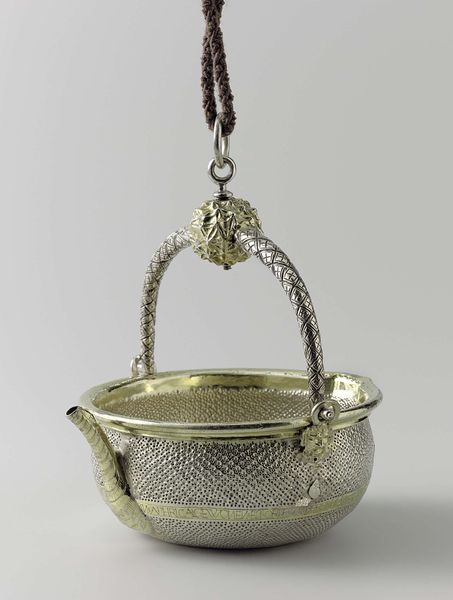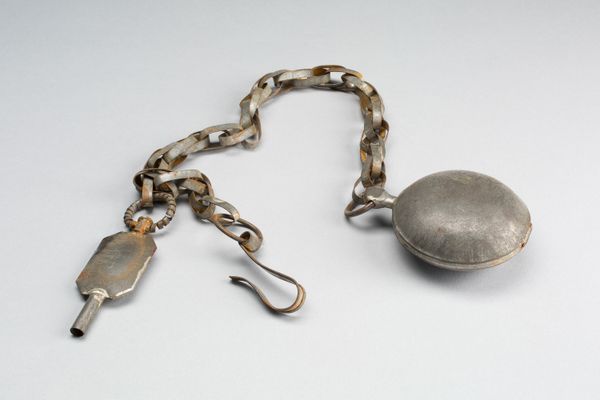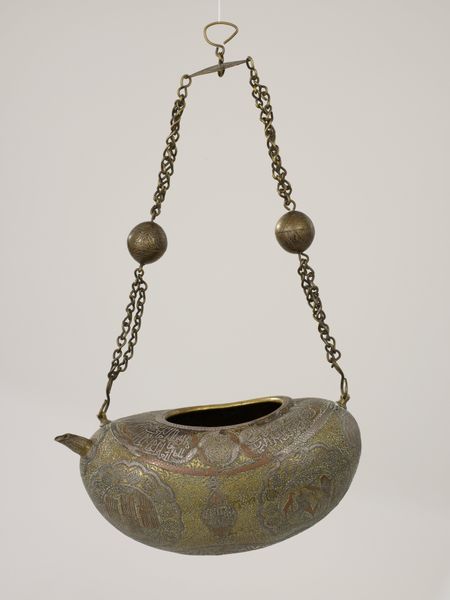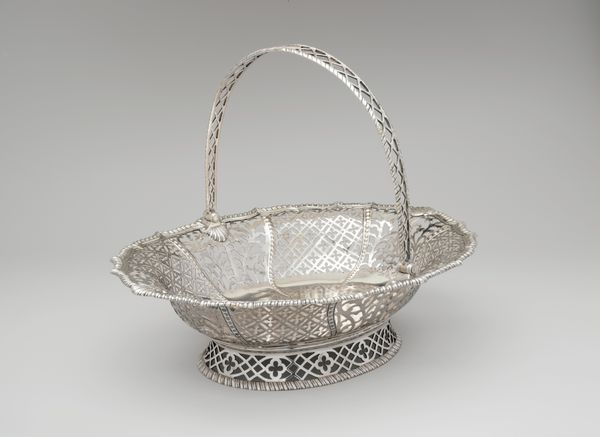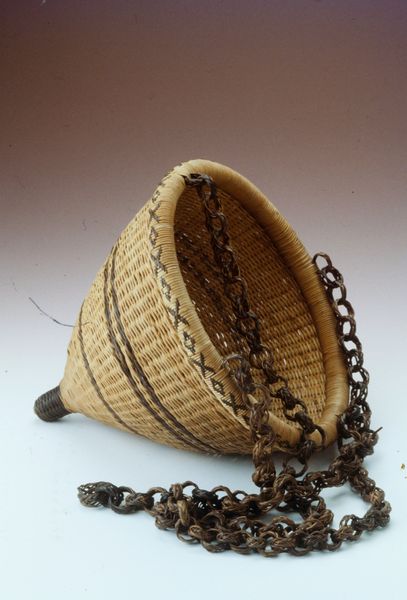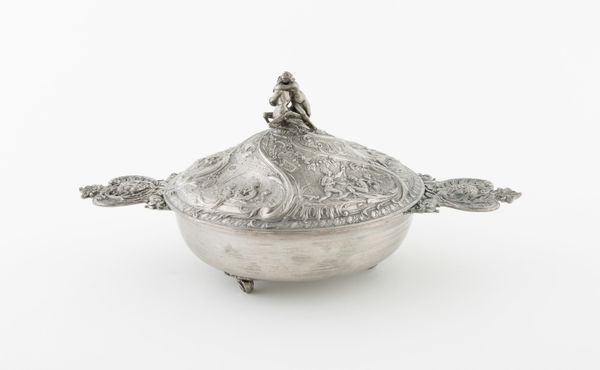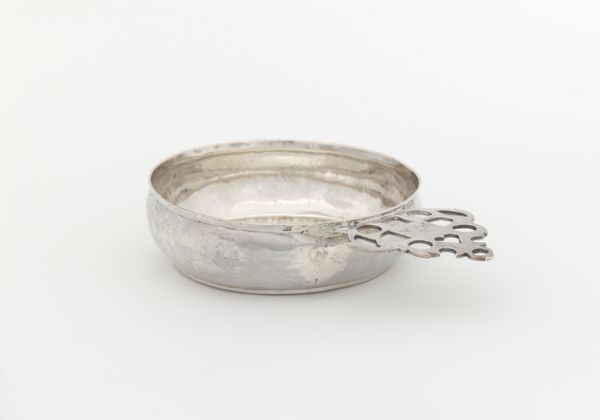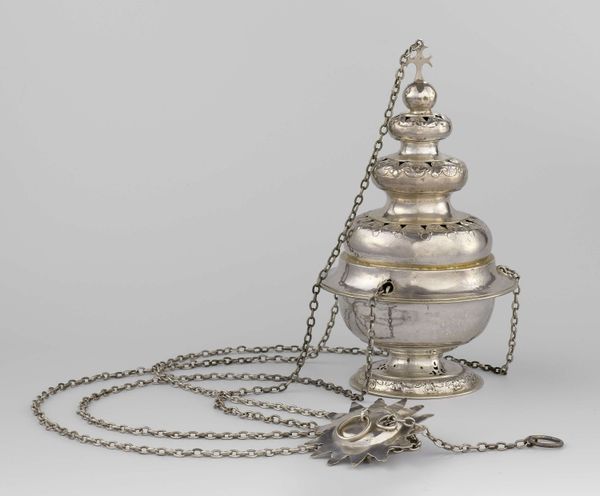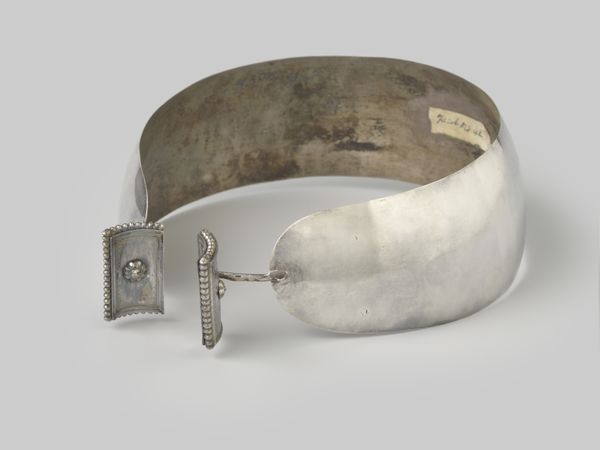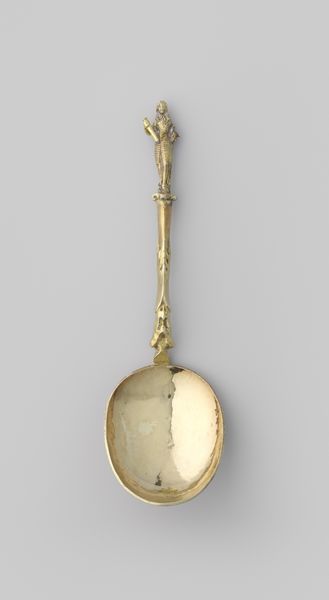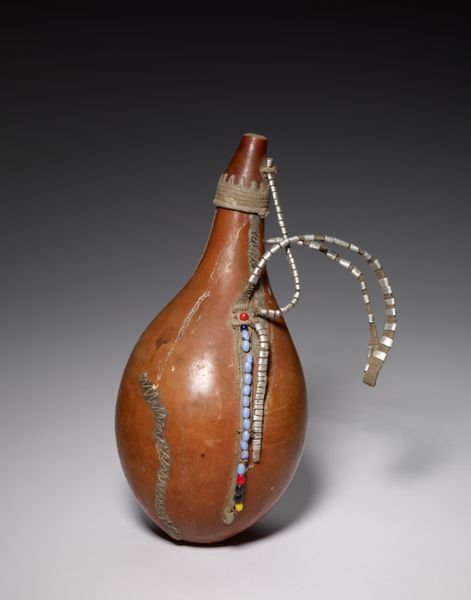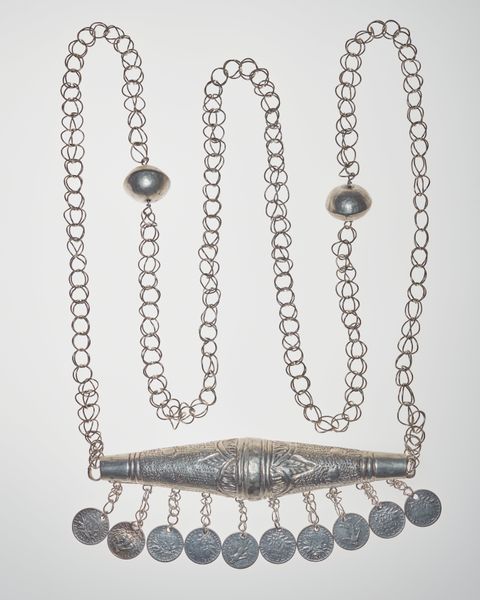
silver, metal, sculpture
#
silver
#
metal
#
form
#
sculpture
#
islamic-art
#
decorative-art
Dimensions: [Not including chain] H. 5 1/2 in. (14 cm) W. 12 1/8 in. (30.8 cm) D. 6 9/16 in. (16.7 cm) Wt. 31.1 oz. (881.8 cm)
Copyright: Public Domain
Curator: This striking piece, made of silver, is called "Begging Bowl". It dates from 1692 to 1743 and was crafted by Yar Muhammad. It’s a stunning example of Islamic decorative art. Editor: My first impression is the visual weight it carries despite, seemingly, its function being tied to notions of humility and need. The dark, almost black body contrasted against the ornate silver is striking. Curator: Indeed. It is important to contextualize this piece within the socio-political realities of the time. Such ornate objects commissioned during this era often played roles within specific religious and social performance, where power and wealth would have been concentrated. Editor: Absolutely, we should consider who would have been in possession of something so elaborately designed when it's ostensibly about begging, about asking for alms? Is the performative act of humility subverted by the material extravagance? Curator: Perhaps. It is an elaborate object—more so than the term 'bowl' implies. Note the fine silver chain that suspends the form and the pierced silver decoration at the rim of the bowl. Editor: I'm really drawn to that contrast between the refined silver work, almost lace-like in places, and what seems like the raw, dark material forming the body of the bowl. It speaks to a visual hierarchy—a very clear display of what is considered precious versus functional. How does this complicate the idea of charity when there’s such ostentation involved? Curator: One interpretation lies within its display, within its artistic merit that elevates mere function into high art, which serves its own purpose in the social economy. This shifts the discourse, in the contemporary setting, as a cultural artifact within museum spaces and the history it espouses. Editor: It makes you question the assumed power dynamics inherent in giving and receiving. It really urges one to think about whose stories get told, and whose generosity is remembered—particularly in contrast with the frequent erasure of those receiving that help. Curator: It makes one ponder about luxury as devotion or artifice, and the historical and societal narratives interwoven within such displays. Editor: Exactly, and what happens when we hold a mirror up to the values embedded within these objects?
Comments
No comments
Be the first to comment and join the conversation on the ultimate creative platform.
